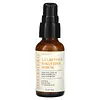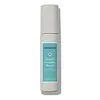What's inside
What's inside
 Key Ingredients
Key Ingredients

 Benefits
Benefits

 Concerns
Concerns

 Ingredients Side-by-side
Ingredients Side-by-side

Water
Skin ConditioningGlyceryl Oleate Citrate
EmulsifyingC13-15 Alkane
SolventCaprylic/Capric Triglyceride
MaskingBakuchiol
AntimicrobialSqualane
EmollientRetinol
Skin ConditioningNiacinamide
SmoothingSodium Hyaluronate
HumectantGlycerin
HumectantPanax Ginseng Root Culture Conditioned Media
Skin ConditioningCamellia Sinensis Leaf
PerfumingPolyglutamic Acid
Skin ConditioningLimnanthes Alba Seed Oil
Skin ConditioningSorbitan Oleate Decylglucoside Crosspolymer
CleansingCetyl Alcohol
EmollientSodium Stearoyl Lactylate
EmulsifyingSclerotium Gum
Emulsion StabilisingParfum
MaskingPropanediol
SolventPhenethyl Alcohol
MaskingPentylene Glycol
Skin ConditioningWater, Glyceryl Oleate Citrate, C13-15 Alkane, Caprylic/Capric Triglyceride, Bakuchiol, Squalane, Retinol, Niacinamide, Sodium Hyaluronate, Glycerin, Panax Ginseng Root Culture Conditioned Media, Camellia Sinensis Leaf, Polyglutamic Acid, Limnanthes Alba Seed Oil, Sorbitan Oleate Decylglucoside Crosspolymer, Cetyl Alcohol, Sodium Stearoyl Lactylate, Sclerotium Gum, Parfum, Propanediol, Phenethyl Alcohol, Pentylene Glycol
Water
Skin ConditioningPropanediol
SolventAstrocaryum Murumuru Seed Butter
EmollientGossypium Herbaceum Fruit Water
MaskingRetinol
Skin ConditioningGlycerin
HumectantBakuchiol
AntimicrobialBidens Pilosa Extract
HumectantLinum Usitatissimum Seed Oil
PerfumingHumulus Lupulus Extract
AntimicrobialSodium Hyaluronate
HumectantTocopherol
AntioxidantCaprylyl Glycol
EmollientHelianthus Annuus Seed Oil
EmollientCopernicia Cerifera Wax
Phenoxyethanol
PreservativeCarbomer
Emulsion StabilisingPotassium Sorbate
PreservativeXanthan Gum
EmulsifyingDisodium Cocoamphodiacetate
CleansingHexylene Glycol
EmulsifyingCitric Acid
BufferingSodium Hydroxide
BufferingPolysorbate 20
EmulsifyingGlyceryl Polyacrylate
1,2-Hexanediol
Skin ConditioningEthyl Ferulate
AntioxidantWater, Propanediol, Astrocaryum Murumuru Seed Butter, Gossypium Herbaceum Fruit Water, Retinol, Glycerin, Bakuchiol, Bidens Pilosa Extract, Linum Usitatissimum Seed Oil, Humulus Lupulus Extract, Sodium Hyaluronate, Tocopherol, Caprylyl Glycol, Helianthus Annuus Seed Oil, Copernicia Cerifera Wax, Phenoxyethanol, Carbomer, Potassium Sorbate, Xanthan Gum, Disodium Cocoamphodiacetate, Hexylene Glycol, Citric Acid, Sodium Hydroxide, Polysorbate 20, Glyceryl Polyacrylate, 1,2-Hexanediol, Ethyl Ferulate
 Reviews
Reviews

Ingredients Explained
These ingredients are found in both products.
Ingredients higher up in an ingredient list are typically present in a larger amount.
Bakuchiol is a plant-derived antioxidant (it's vegan!). It is often called the replacement for retinol although it is not part of the same family.
It has similar effects as retinol: skin smoothing, reducing discoloration, and preventing wrinkles. It does not cause as much irritation as traditional retinoids.
Bakuchiol works by breaking down free radicals and stimulating collagen production in skin.
Combining bakuchiol with retinol will not have adverse side effects. Studies show using them will just boost the benefits. Bakuchiol is also found to help stabilize retinol.
While bakuchiol does not make the skin more sun sensitive, we recommend wearing SPF on a daily basis.
Read more about traditional retinol
Learn more about BakuchiolGlycerin is already naturally found in your skin. It helps moisturize and protect your skin.
A study from 2016 found glycerin to be more effective as a humectant than AHAs and hyaluronic acid.
As a humectant, it helps the skin stay hydrated by pulling moisture to your skin. The low molecular weight of glycerin allows it to pull moisture into the deeper layers of your skin.
Hydrated skin improves your skin barrier; Your skin barrier helps protect against irritants and bacteria.
Glycerin has also been found to have antimicrobial and antiviral properties. Due to these properties, glycerin is often used in wound and burn treatments.
In cosmetics, glycerin is usually derived from plants such as soybean or palm. However, it can also be sourced from animals, such as tallow or animal fat.
This ingredient is organic, colorless, odorless, and non-toxic.
Glycerin is the name for this ingredient in American English. British English uses Glycerol/Glycerine.
Learn more about GlycerinPropanediol is an all-star ingredient. It softens, hydrates, and smooths the skin.
It’s often used to:
Propanediol is not likely to cause sensitivity and considered safe to use. It is derived from corn or petroleum with a clear color and no scent.
Learn more about PropanediolRetinol is a gold-standard ingredient for anti-aging. It is a form of Vitamin A and belongs to the class of retinoids that also includes tretinoin.
Why is retinol famous?
It has the most scientific studies backing up its skin benefits out of all the non-prescription ingredients.
Retinol is proven to:
This is why retinol is effective at removing wrinkles, fading dark spots, treating acne, and reducing the appearance of pores.
Studies show retinol is less effective when exposed to UV. Be sure to look for appropriate packaging to keep your retinol potent (similar to Vitamin C).
Using retinol or any retinoids will increase sun-sensitivity in the first few months. Though studies show retinoids increase your skin's natural SPF with continuous use, it is best to always wear sunscreen and sun-protection.
We recommend speaking with a medical professional about using this ingredient during pregnancy.
Retinol may cause irritation in some people, so be sure to patch test. Experts recommend 'ramping up' retinol use: start using this ingredient once a week and work up to using it daily.
Read about Tretinoin
Learn more about RetinolSodium Hyaluronate is hyaluronic acid's salt form. It is commonly derived from the sodium salt of hyaluronic acid.
Like hyaluronic acid, it is great at holding water and acts as a humectant. This makes it a great skin hydrating ingredient.
Sodium Hyaluronate is naturally occurring in our bodies and is mostly found in eye fluid and joints.
These are some other common types of Hyaluronic Acid:
Learn more about Sodium HyaluronateWater. It's the most common cosmetic ingredient of all. You'll usually see it at the top of ingredient lists, meaning that it makes up the largest part of the product.
So why is it so popular? Water most often acts as a solvent - this means that it helps dissolve other ingredients into the formulation.
You'll also recognize water as that liquid we all need to stay alive. If you see this, drink a glass of water. Stay hydrated!
Learn more about Water